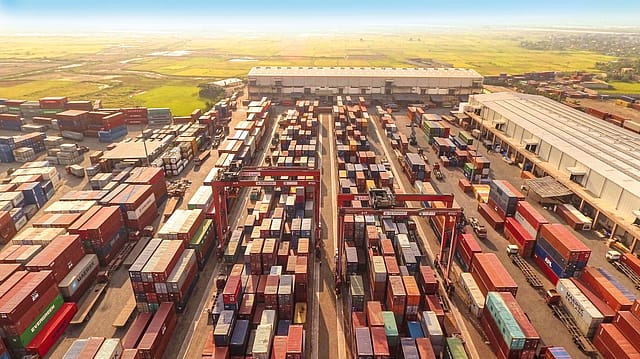India's trade sees mixed fortunes: Exports dip while imports surge, urging fresh strategy for growth
ADVERTISEMENT

India’s goods exports registered a dip, while imports increased during January 2025 compared to the corresponding month the previous year, according to the Commerce Ministry’s monthly trade data. Volatility in commodity and metal prices, along with the depreciation of the Indian rupee, were the main reasons for poor export performance and high imports, trade experts said.
Merchandise exports in January 2025 were valued at $36.43 billion, 2.4% lower compared to $37.32 billion in January 2024. Meanwhile, merchandise imports rose by 9.3% to $59.42 billion in January 2025, compared to $53.88 billion in January 2024.
Cumulative exports for the April-January period stood at $358.91 billion, compared to $353.97 billion during the same period in 2023-24. Imports were $601.9 billion, compared to $560.27 billion during the same 10-month period of the previous financial year. The merchandise trade deficit for 2024-25 stands at $242.99 billion, compared to $206.29 billion during April-January 2023-24. The rupee has depreciated by 1.4% against the US dollar since the beginning of the year, which has impacted the trade deficit, as India meets 90% of its oil demand from overseas.
Goods that showed positive growth in January include electronic items (78.97%), coffee (57.07%), rice (44.61%), meat, dairy, and poultry products (35.66%), mica, coal, and other ores, minerals, including processed minerals (27.71%), drugs and pharmaceuticals (21.46%), gems and jewellery (15.95%), readymade garments of all textiles (11.45%), marine products (7.98%), engineering goods (7.44%), and more.
January 2026
Netflix, which has been in India for a decade, has successfully struck a balance between high-class premium content and pricing that attracts a range of customers. Find out how the U.S. streaming giant evolved in India, plus an exclusive interview with CEO Ted Sarandos. Also read about the Best Investments for 2026, and how rising growth and easing inflation will come in handy for finance minister Nirmala Sitharaman as she prepares Budget 2026.
The Federation of Indian Export Organisations (FIEO) said that India’s external trade performance calls for strategic measures to bolster exports and rationalize imports. “Export diversification, targeting new markets and products, continuation of trade facilitation measures, and export incentives are needed,” said Ashwani Kumar, president of FIEO. He called for a careful review of import policies to identify areas where domestic production can be encouraged to reduce dependency on imports.
Kumar also stressed the importance of a collaborative effort between the government, industry, and other stakeholders to address challenges and opportunities in foreign trade, highlighting the necessity of a focused export strategy, particularly toward key markets such as the United States, where the ongoing tariff war presents new opportunities. He also emphasized the continuation of the Interest Equalization Scheme, R&D support, the creation of a globally recognised Indian shipping line, and the resolution of GST-related export challenges as vital for sustaining the sector's growth in the future.
